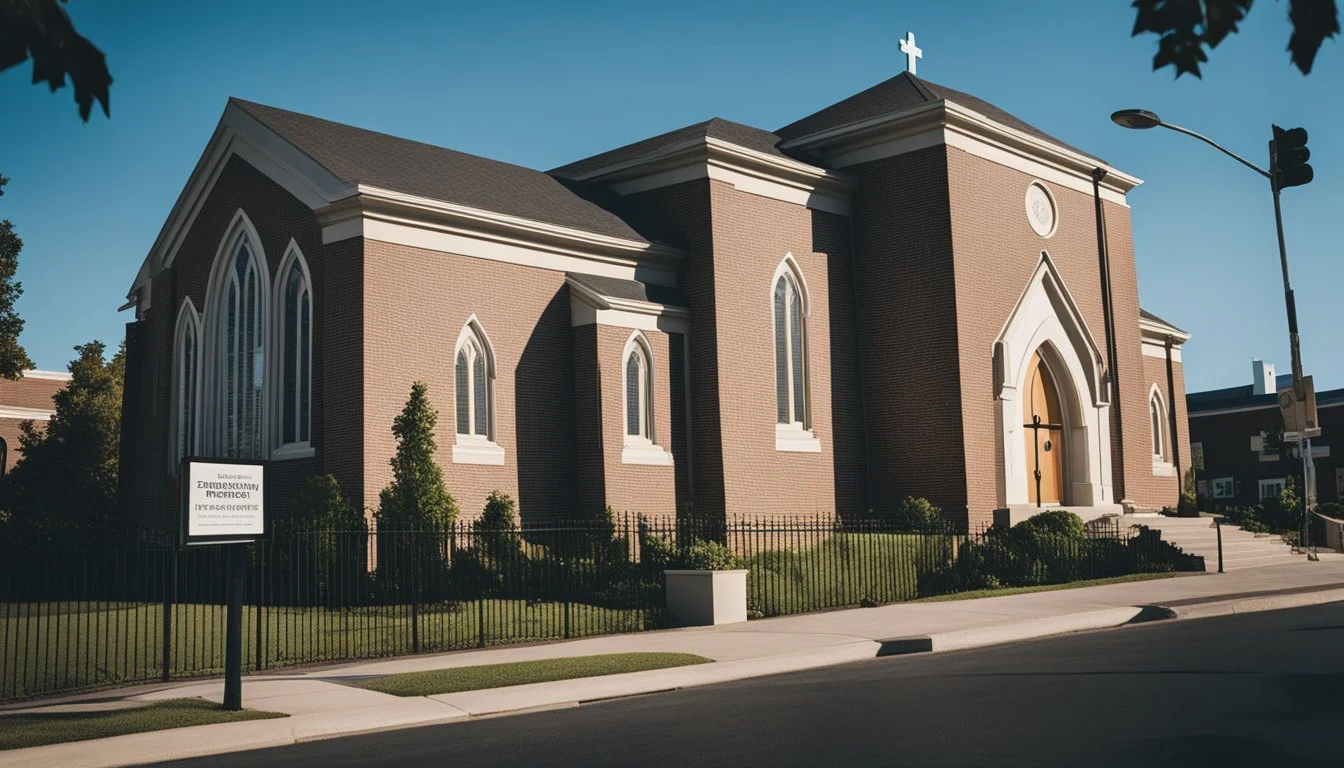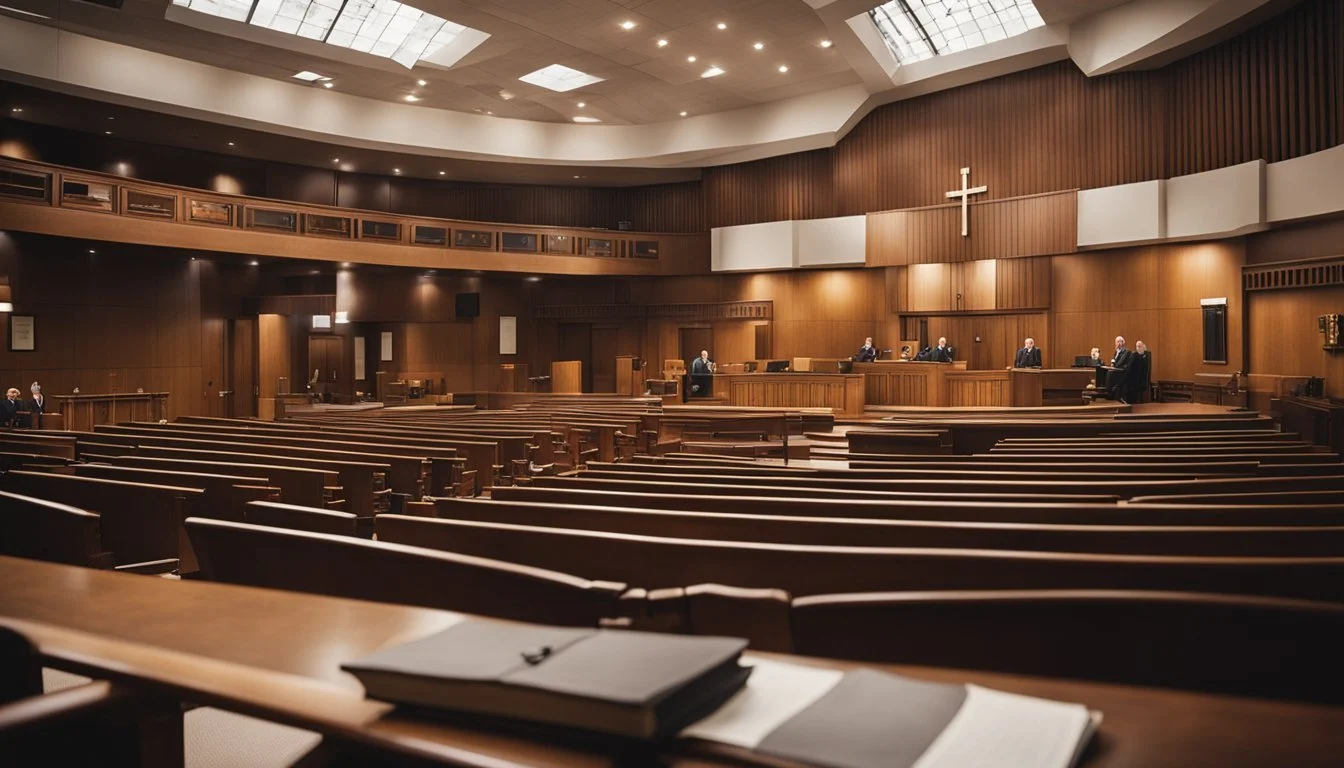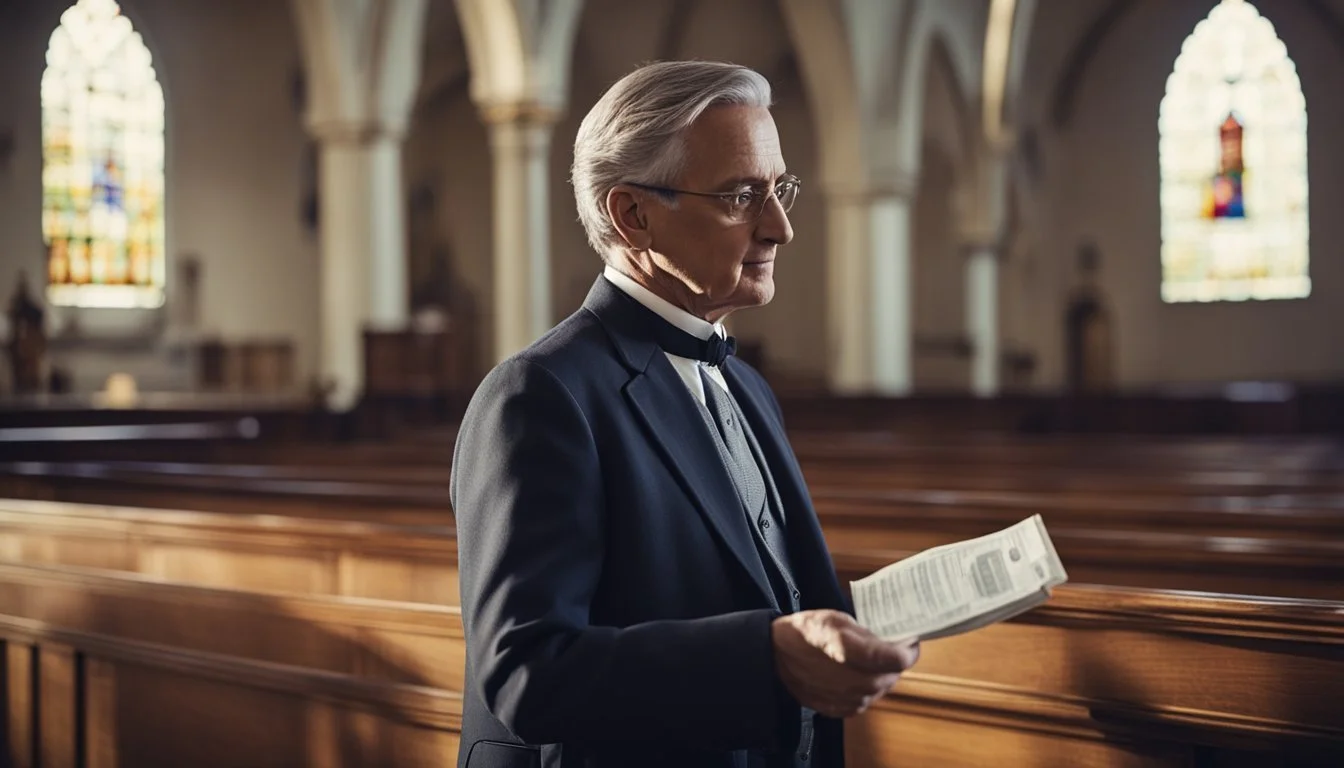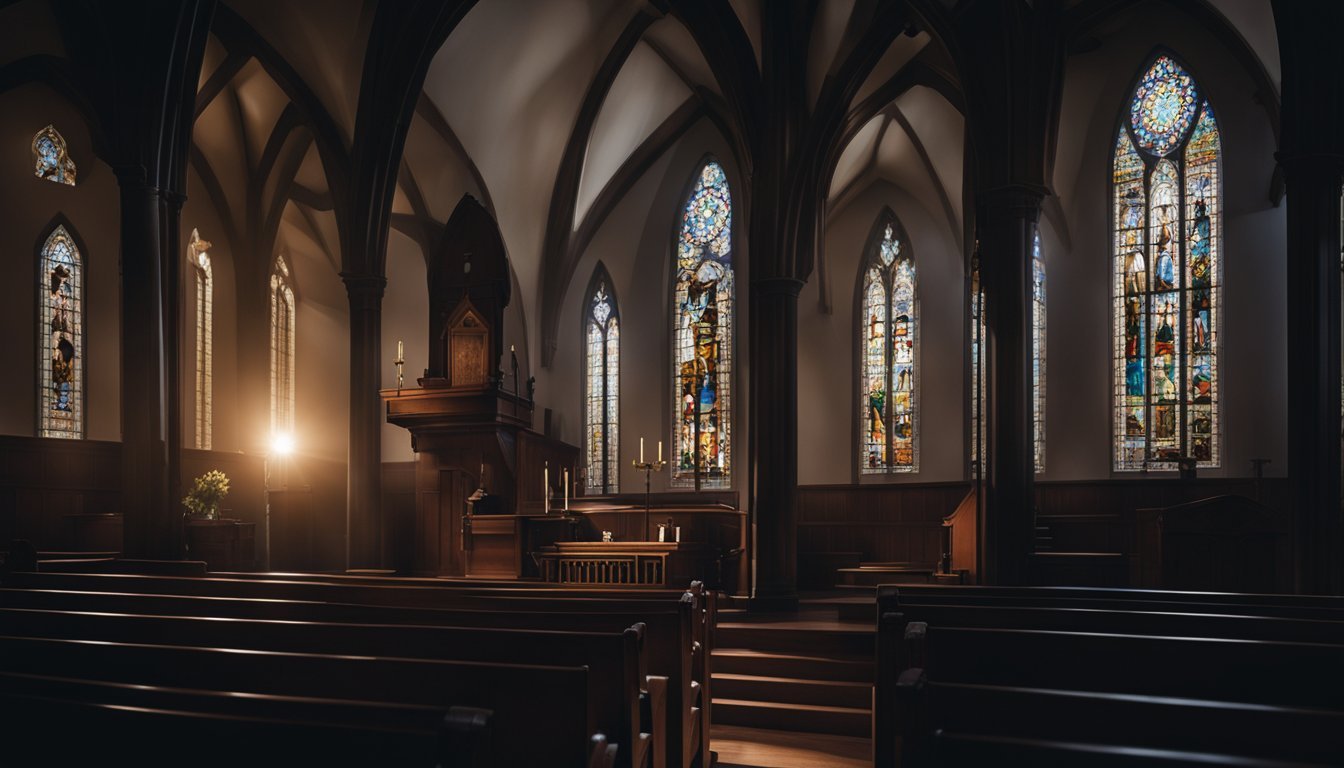6 True Crime Documentaries About Presbyterian Churches
Unveiling Hidden Scandals
True crime documentaries have a unique ability to captivate audiences by exploring the darker aspects of humanity, often uncovering shocking and disturbing true stories. Among the vast array of topics these documentaries cover, crimes involving Presbyterian churches offer a particularly compelling narrative. These films delve into incidents where sanctuaries of faith and peace were turned into scenes of grisly crimes.
For viewers looking to understand the complex intersection of religion and criminal activities, these documentaries provide in-depth analyses and harrowing tales that shed light on the sinister events that took place within Presbyterian communities. With meticulous attention to detail, each documentary reveals not only the chilling facts of the crimes but also the profound impact on the communities involved.
1) The Amish and the Reformation: A Tale of Separation
The Amish, known for their simple living, high regard for community, and separation from modern society, trace their roots back to the Anabaptist Reformation in 16th-century Europe.
Originating in Switzerland, the Anabaptists rejected the baptism of infants, advocating instead for adult baptism as a conscious act of faith. This fundamental belief put them at odds with both the Catholic Church and Protestant reformers.
The Anabaptist movement faced severe persecution. This caused many followers to flee, eventually leading to the establishment of the Amish community under the leadership of Jakob Ammann. His followers, known as the Amish, embraced a lifestyle that emphasized humility, tradition, and communal living.
Ammann's reforms were strict. He advocated for shunning excommunicated members more rigorously and insisted on simple, modest dress. His followers' dedication to these principles led to a distinct identity separate from other Anabaptist groups, such as the Mennonites.
The Amish emigrated to North America in the 18th century, seeking religious freedom. They settled primarily in Pennsylvania, Ohio, and Indiana. Their distinctive way of life has remained largely unchanged, carefully preserving traditions from their early beginnings.
For more information, you can refer to the Wikipedia page on Amish.
2) Presbyterian vs. Puritans: Historical Differences
Presbyterians and Puritans share common roots in the Reformation but developed distinct identities over time.
The Presbyterian church is structured with a system of representative assemblies. It emerged from the Reformation in Scotland, primarily influenced by John Knox, a student of John Calvin.
Puritans, while they also followed Calvinist theology, sought to purify the Church of England from within. They placed a strong emphasis on personal piety and were less centralized in their church governance.
In colonial America, many early Presbyterians were part of the Puritan migration but maintained separate identities. Presbyterians were more likely to organize church governance regionally, whereas Puritans often preferred congregational autonomy.
Both groups faced persecution in England but found relative religious freedom in the American colonies. Their early American settlements reflected their respective theological and governance structures.
Presbyterians valued a hierarchical oversight of church matters through elected elders, while Puritans favored more local control by individual congregations.
The theological and governance differences between Presbyterians and Puritans contributed to distinct cultural and social dynamics in their respective communities.
3) The Witch Hunt Narratives in Presbyterian History
Witch hunts have left an indelible mark on history, and Presbyterian churches were not immune to this intensity. The intertwining of religion and societal fear created fertile ground for accusations and trials.
During the 16th and 17th centuries in Europe, the Great Hunt led to thousands of accusations and executions. Presbyterian congregations often found themselves embroiled in these events, reflecting both local and broader societal anxieties.
In the American colonies, the Salem witch trials are among the most infamous. While largely driven by Puritan influences, Presbyterians also dealt with witch hunt hysteria, as fear of the devil and witchcraft permeated all levels of society.
The McMartin Preschool case of the 1980s does not directly involve Presbyterian churches, but it underscores how modern witch hunts echo historical ones. The same dynamics of fear, accusation, and societal impact were in play, demonstrating the persistence of such narratives.
For more detailed historical contexts, researchers may consult publications and documentaries that explore these episodes. These resources can provide in-depth analysis and insight into how Presbyterian communities navigated the complex and often harrowing realities of witch hunt hysteria.
4) Moral Majority: Scandals in Presbyterian Congregations
Recent history has seen an uptick in scandals within Presbyterian congregations, with significant attention given to various instances of misconduct. This focus aligns with broader discussions around the influence of moral and religious organizations in political and social realms.
One example is the revelations at Tenth Presbyterian Church in Philadelphia. Senior Pastor Liam Goligher resigned in December 2022 after legal documents detailing a 2014 citation for "personal misconduct" were made public. The church has since faced several investigations into similar allegations.
Another case is Kristen Hann, the former director of women's ministry at Surfside Presbyterian Church in Myrtle Beach. Hann lost her job following the church's controversial handling of abuse allegations. This incident highlighted a pervasive issue concerning how abuse cases are managed within these religious institutions.
Additionally, the Presbyterian Church in America's Standing Judicial Commission made headlines with its decision on the Greg Johnson Case in 2021. Johnson, a pastor, faced internal church disciplinary actions, sparking widespread discussions about governance and accountability within the church.
These incidents underline the critical need for transparency and accountability within religious communities. The spotlight on these scandals has prompted calls for reforms to better address and prevent abuse and misconduct within Presbyterian congregations.
More information on Tenth Presbyterian Church scandal
More information on Kristen Hann case
More information on Greg Johnson case
5) The Trial of Faith: Church Divisions in True Crime
In examining the intersections of true crime and religious communities, "The Keepers" (2017) stands out. This series delves into the unsolved murder of Sister Cathy Cesnik and uncovers allegations of sexual abuse by a priest at Archbishop Keough High School. The documentary exposes deep divisions within the Catholic Church and the lasting impact on its congregation. More Info
"Abducted in Plain Sight" (2017) tells the harrowing story of Jan Broberg, who was kidnapped by family friend Robert Berchtold. This documentary highlights the psychological manipulation and trust breaches within a devout Latter-Day Saints community. It examines how faith and community trust can be exploited. More Info
"The Family" (2019) explores a secretive Christian organization known as The Fellowship. It reveals the group's influence in American politics and its ability to create significant religious and political divides. This documentary takes a deep dive into how religious organizations can wield power and foster internal divisions. More Info
"Murder Among the Mormons" (2021) is a true crime series about the bombings in Salt Lake City that shook the Mormon community. It reveals how religious documents and the pursuit of faith can lead to deception and murder, showcasing the vulnerabilities within tightly-knit religious groups. More Info
In "Wild Wild Country" (2018), the documentary examines the controversial Rajneeshpuram community in Oregon, led by Indian guru Bhagwan Shree Rajneesh. The series details conflicts between the commune and the local residents, presenting a stark picture of how religious and ideological divisions can escalate into criminal activities. More Info
6) Faith Betrayed: Embezzlement in Church Communities
Faith Betrayed: Embezzlement in Church Communities (2020) investigates financial corruption within church settings. It highlights how trusted members exploit their positions for personal gain.
Interviews with former church employees reveal how funds, meant for charitable causes, were siphoned off. One case details a church accountant who diverted donations into personal accounts.
The documentary also examines the lack of oversight that allows such crimes to occur. Experts in church governance discuss measures for financial accountability and transparency.
Victims share their stories of betrayal and the impact on community trust. The emotional toll on congregants is significant, as they grapple with the violation of their faith.
Historical Context of Presbyterian Churches
Presbyterian churches have a distinct history marked by their origins in the Protestant Reformation and their unique form of church governance led by elders. They hold specific doctrinal beliefs underlined by the Westminster declarations.
Origins and Formation
The Presbyterian Church emerged during the 16th century as part of the Protestant Reformation. It traces its roots back to Scotland and Ireland, with significant influence from reformers like John Knox, who studied under John Calvin.
In 1789, the first General Assembly of the Presbyterian Church in the United States of America (PCUSA) took place in Philadelphia. This event marked the formal organization of Presbyterianism in America after it had spread from the British Isles.
Key Doctrinal Beliefs
Presbyterian doctrine is defined by the Westminster Confession of Faith. This theological framework emphasizes Calvinistic theology, which includes beliefs in predestination and the sovereignty of God in all aspects of life.
Presbyterian polity is distinctive due to its governance by a council of elders, both teaching and ruling elders, indicating a collective leadership model. Unlike some other denominations, Presbyterians do not prescribe specific forms of worship, which allows for a diverse range of worship practices within their congregations.
True Crime in a Religious Setting
True crime incidents within religious settings not only affect individuals directly involved but also the larger congregations. These events can deeply influence community dynamics and emotional well-being.
Psychological Impact on Congregations
Exposure to true crime within a religious context can profoundly disrupt the psychological stability of a congregation. Members often experience a range of emotions such as shock, betrayal, and disillusionment. Trust issues may arise, leading to decreased participation and support for church activities.
Victims and their families often require counseling to cope with the trauma. Group therapy sessions and individual counseling are crucial for mental health recovery. Congregational leaders must prioritize transparent communication to mitigate fear and misinformation, helping restore a sense of normalcy and trust within the community.
The Role of Community in Healing
The support of a unified community is vital in the healing process following a true crime incident. Active engagement in faith-based support groups and community outreach programs can provide emotional and practical support for affected individuals.
Open forums for discussion can allow members to express their feelings and concerns. Religious leaders must take a proactive stance, organizing prayer meetings and healing services which can foster a stronger sense of belonging and collective resilience. This united response can greatly aid in the congregation's recovery and ability to move forward.
Media Representation of True Crime in Churches
True crime documentaries involving Presbyterian churches bring forth ethical storytelling challenges and significantly impact public perception. Balancing factual narratives with sensitivity is crucial.
Ethical Considerations in Storytelling
Documenting true crime in church contexts requires delicate handling of victim and community stories. Filmmakers must seek consent from survivors and families to ensure respectful representation.
Accurate portrayal of events, without sensationalizing or distorting details, maintains journalistic integrity. Ethical storytelling involves depicting the truth while being mindful of the emotional and psychological impact on viewers.
Preserving anonymity for non-public figures and minors helps protect those affected. Striking a balance between public interest and personal dignity poses a constant challenge in true crime storytelling within religious settings.
Influence on Public Perception
True crime documentaries shape viewers' opinions about religious institutions. Highlighting criminal activities in Presbyterian churches may lead to generalized mistrust or fear towards such places of worship.
Positive portrayal of church responses, such as community support and rehabilitation efforts, can counter negative sentiments. This balanced depiction fosters an informed and nuanced public view.
Documentaries can also influence interest in social justice and legal reforms. When viewers see the church's role in addressing crime, it may inspire greater community involvement and advocacy for systemic changes.










